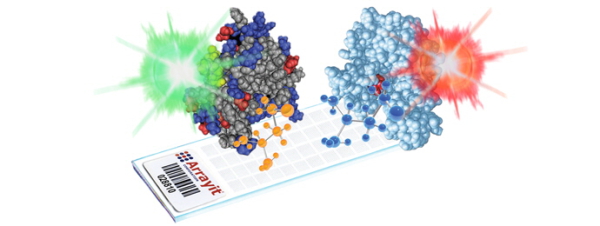Microarray printing technology has always been at the top of microbiological field for a long time. From everything from pins to pinheads, virtually everything is used by major institutions around the world. The extensive list of microarray technology and instruments makes it easier for scientists since they fit their needs. With services associated with microarrays, commercial testing and diagnostic uses of the instruments has become easier and more efficient.
But the most important part of the microarray is the slide itself. Though there are many faulty products that can be used, the best and most widely used ones are of two types.
Glass DNA microarrays and High-density oligonucleotide microarrays. Glass microarrays involve the spotting of prefabricated DNA fragments on the glass surface. High-density oligonucleotide microarrays are also called ‘chips’ which includes in situ oligonucleotide synthesis.

Glass DNA Microarrays
These were one of the first microarrays to be produced. It is manufactured by using a robotic device which deposits a Nano liter of DNA samples on the slide surface at a calculate distance from each other. They are deposited or ‘spotted’ in serial order and are 50-150 µm in diameter. This allows the moderately sized glass slide to contain almost 10,000 or more spots is even more carefully placed.
The very first step of manufacturing a glass DNA microarray is choosing the material to spot onto the microscope surface. The first step of manufacturing a glass cDNA microarray is selecting the material to spot onto the microscope glass surface. This is followed by the readying and cleansing of DNA sequences that will represent the gene under observation.
This is a crucial step because the DNA fragments should be of the same concentration, molarity and size, to achieve similar reaction for the hybridisations. The third step is spotting DNA solution on the chemically altered glass slides usually with a cross-linking chemical coating materials such as polyethyleneimine polymer p-aminophenyl trimethoxysilane and dendrimeric structure. It is these substrates that are coated on the surfaces of the glass slide and determines how the DNA solution will be immobilized on the surface.
In SituIn Situ Oligonucleotide Array
The ‘chip’ oligonucleotide array is a far more sophisticated than the glass microarray. It is manufactured by using the technology of in situ chemical synthesis. This is further pioneered during manufacturing to develop high quality oligonucleotide DNA arrays.
The fabrication photolithography process of these chips starts with the derivatization of the solid support it has. Usually quartz with a covalent linker molecule terminated with a photolabile protection. This is achieved by cleansing the quartz to achieve uniform hydroxylation across its surface. Then it is placed in a bath of silane that reacts with the hydroxyl groups of the quartz and creates a matrix of covalently linked molecules. Later on, the in situ chemical process takes place to complete the array containing thousands of 25-mer oligonucleotides.
Though both microarrays are just as crucial to gene study and DNA observation, from a manufacturing point of view both of these are extremely different. There are fundamental differences in both the manufacturing process and the amount of DNA samples that both arrays can use. Everything from the size of the DNA printed fragments to the methods of printing, the spotting and the data images generated by them.
Scott Andrews is a budding researcher on microarray technology and development. His work with microbiology and the microarray printer is noted on various websites and recommends arrayjet.co.uk for all microarray related services.


























